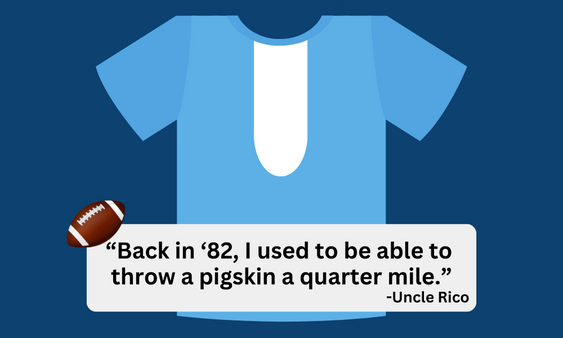If you want to lose 5-10lbs (likely more) in the next 30 days with no changes to your diet, replace half of your daily stationary time with walking.
Not exercise, just plain old *walking*.
-Moving a phone call to a mobile walk and talk.
-Being the person at work that encourages your co-workers to walk with you around your office building rather than sitting in the conference room for meetings. Looking at you, Bosses, lead from the front!
-Purchasing a walking treadmill to fit under your standing desk and slowly using it more and more during your day.
-Forgoing a chunk of the nightly Netflix sesh and encouraging your kids to go for a post-dinner walk with you.
Lots and lots of different ways to add more movement into your day, what you’ll likely find is that your daily tasks/duties that involve technology are the best targets. How can you stay able to do some version of that task, but while in motion? If it’s a ‘want to do’ instead of a ‘have to do’, is it worth replacing at least SOME of that time popping up or out for a walk instead?
—
The benefits of walking “more” go far beyond fat loss.
Check out this study from last year in Nature Medicine:
“Participants in the study, published Monday in the journal Nature Medicine, wore activity trackers at least 10 hours a day and allowed researchers access to their electronic health records over multiple years.
Our study had an average of 4 years of continuous activity monitoring. So, we were able to account for the totality of activity between when monitoring started and when a disease was diagnosed, which is a major advantage because we didn’t have to make assumptions about activity over time, unlike all prior studies,” Brittain said.
People in the study ranged in age from 41 to 67 and had body mass index levels from 24.3, which is considered in the healthy weight range, to 32.9, which is considered obese.
Researchers found that people who walked 4 miles a day — about 8,200 steps — were less likely to become obese or suffer from sleep apnea, acid reflux and major depressive disorder. Sleep apnea and acid reflux respond well to weight loss, which can reduce pressure on the throat and stomach, while exercise is a cornerstone treatment for depression.
The study also found that overweight participants (those with BMIs from 25 to 29) cut their risk of becoming obese by half if they increased their steps to 11,000 steps a day. In fact, “this increase in step counts resulted in a 50% reduction in cumulative incidence of obesity at 5 years,” the study found.
Applying the data to a specific example, the authors said individuals with BMIs of 28 could lower their risk of obesity 64% by increasing steps from about 6,000 to 11,000 steps per day.”
—
Whether or not you can hit 10,000 or 11,000 or 15,000 steps should not factor in deciding to move more.
The best possible goal for you to keep with you is “more than my body has been doing”, and staying in that mode until you figure out a sustainable number as close to 10k+ as possible, though lots of science points to 11k+ as being the best daily average to drastically reduce risk of obesity on top of quite a few other serious diseases amongst the Top 10 leading causes of death in the US.












